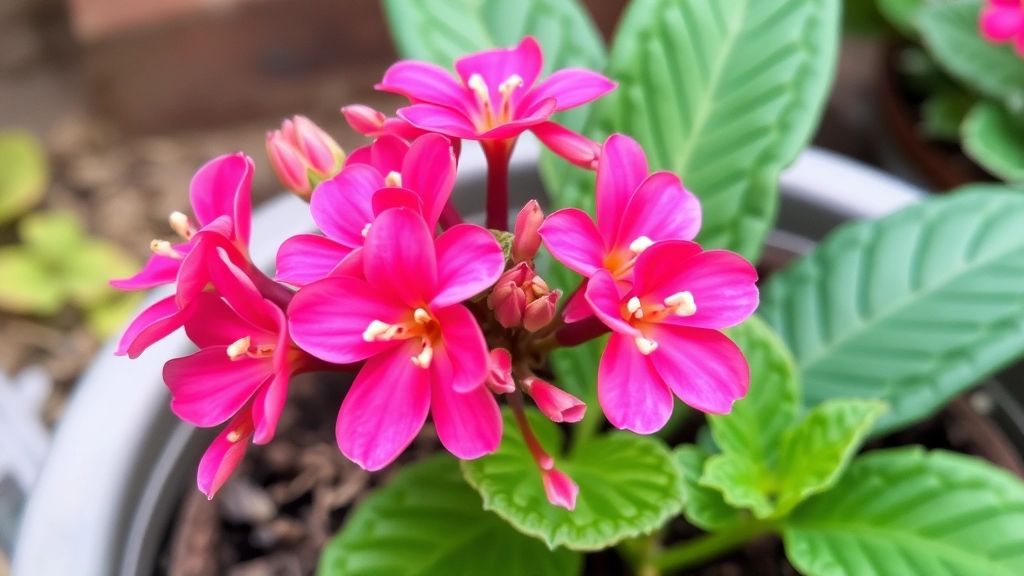Struggling with your Kalanchoe not flowering?
You’re not alone. Many plant enthusiasts face this issue and wonder what went wrong. The good news is, with a few tweaks to your care routine, you can encourage your Kalanchoe to bloom again. Let’s dive into the common causes and practical solutions to get those vibrant flowers back.
Common Causes
First, let’s talk about light. Kalanchoes need plenty of bright, indirect sunlight to thrive. If your plant isn’t getting enough light, it might focus on growing leaves instead of flowers. Adjusting its location can make a big difference.
Watering Habits
Next, consider your watering habits. Overwatering or underwatering can stress the plant, preventing it from flowering. Aim for a balanced watering schedule to keep your Kalanchoe happy and healthy.
Light Conditions
One of the primary reasons Kalanchoe may not flower is insufficient light.
- Insufficient Sunlight: Kalanchoe thrives in bright, indirect sunlight. If it’s not getting enough light, it may focus on growing leaves instead of flowers. For more tips, check out our guide on how to make your Kalanchoe flower again.
Watering Issues
Watering practices play a significant role in flowering.
- Overwatering: Too much water can lead to root rot, which hinders the plant’s ability to bloom.
- Underwatering: Conversely, if the plant is too dry, it may also struggle to produce flowers. Learn more about the right watering techniques in our ultimate guide to caring for Kalanchoe.
Temperature Fluctuations
Kalanchoe prefers stable temperatures.
- Cold Drafts: Exposure to cold drafts can stress the plant, causing it to abort its flowering cycle.
Nutrient Deficiency
Nutrients are essential for a Kalanchoe’s health.
- Lack of Fertilisation: If your plant isn’t receiving the right nutrients, it may not have the energy to produce flowers.
Seasonal Changes
Kalanchoe has a natural blooming cycle that can be disrupted.
- Dormancy: During certain times of the year, particularly in winter, the plant may enter a dormant phase, halting flower production.
How Light Affects Kalanchoe Blooming
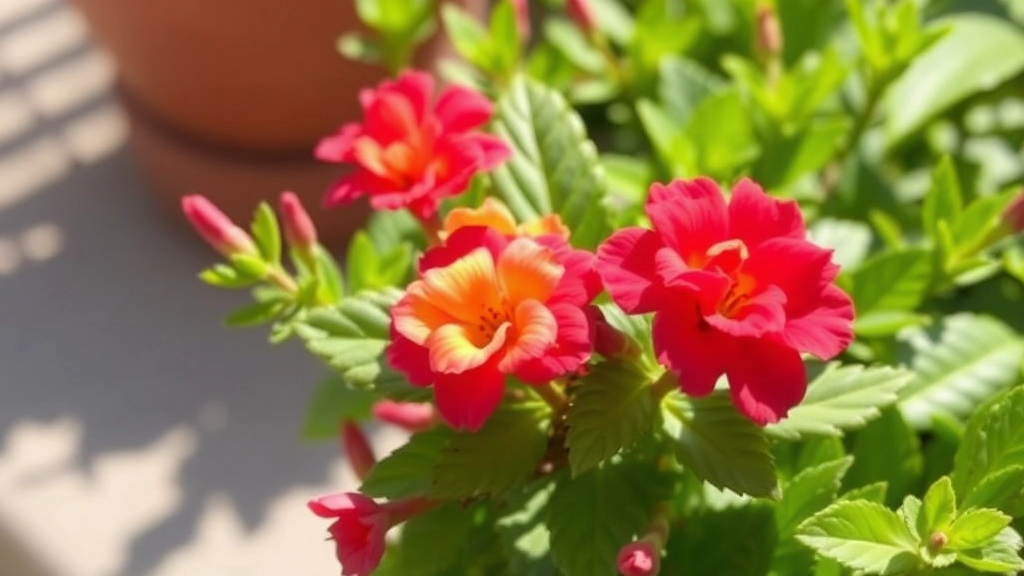
Ever wondered why your Kalanchoe isn’t blooming as much as you’d like?
Light plays a massive role in whether your plant decides to show off its flowers or not.
The Importance of Light
Kalanchoes are native to bright, sunny environments.
So, if they’re not getting enough light, they can become a bit moody and skip the blooming season.
- Bright Indirect Light: Kalanchoes thrive in bright, indirect sunlight. A south-facing window is usually their best friend.
- Direct Sunlight: Too much direct sunlight can scorch their leaves.
- Low Light: If they’re in a dim spot, don’t expect many flowers. They need at least 6 hours of light daily to really get going.
Signs of Light Stress
If you notice your Kalanchoe stretching towards the light or its leaves turning yellow, it’s time to rethink its location.
Quick Fixes:
- Move it closer to a window.
- Rotate the pot occasionally to ensure even light exposure.
Seasonal Changes
As seasons change, so does the light.
During winter, the days are shorter, and your Kalanchoe might need a little extra help.
Consider using grow lights if natural light is lacking.
Proper Watering Practices to Encourage Flowering
Are you struggling to get your Kalanchoe to bloom? One of the most critical factors is proper watering.
Understanding Water Needs
Kalanchoe plants thrive in well-draining soil and prefer a specific watering routine. Overwatering can lead to root rot, while underwatering can stress the plant, both of which hinder flowering. Here are some essential watering tips:
- Water Sparingly: Allow the top inch of soil to dry out between waterings.
- Use Room Temperature Water: Cold water can shock the plant.
- Water at the Base: Avoid wetting the leaves to prevent fungal issues.
- Seasonal Adjustments: Decrease watering in the winter when the plant is dormant.
Signs of Over or Underwatering
Recognising the signs of improper watering can save your plant from stress:
The Importance of Pruning for Flower Production

When it comes to encouraging your Kalanchoe to bloom, pruning is often overlooked but plays a crucial role in flower production.
Many plant enthusiasts wonder why their Kalanchoe isn’t flowering as expected. One common reason could be inadequate pruning.
Why Pruning Matters
Pruning isn’t just about aesthetics; it directly impacts the plant’s ability to produce flowers. Here’s how:
- Encourages New Growth: By removing spent flowers and dead leaves, you stimulate new growth, which is essential for flowering.
- Improves Air Circulation: Pruning helps to thin out crowded areas, allowing better airflow, which can prevent diseases that hinder blooming.
- Redirects Energy: When you prune, the plant can redirect its energy from maintaining old growth to producing new blooms.
How to Prune Your Kalanchoe
To effectively prune your Kalanchoe for optimal flower production, follow these steps:
- Timing is Key: Prune after the blooming cycle to avoid cutting off potential flowers.
- Use Clean Tools: Always use sharp, sterilised scissors or pruning shears to prevent disease.
- Remove Dead or Dying Parts: Cut back any spent flowers and unhealthy leaves.
- Shape the Plant: Trim to maintain a balanced shape, promoting even growth.
Pruning Frequency
- Prune your Kalanchoe every few months to keep it healthy and encourage continuous blooming.
- Monitor the plant regularly; if you see any dead flowers or leaves, remove them promptly.
Seasonal Dormancy and Its Role in Flowering
Have you ever wondered why your Kalanchoe seems to take a break from blooming?
Understanding seasonal dormancy is key to encouraging your plant to flower again.
Kalanchoe, like many succulents, experiences a natural dormancy period, typically during the colder months.
What is Seasonal Dormancy?
- Natural Resting Phase: This is when the plant conserves energy.
- Reduced Growth: You may notice slower growth and fewer flowers.
- Environmental Triggers: Changes in temperature and light can signal dormancy.
During this time, it’s essential to adjust your care routine to support your Kalanchoe.
How to Care for Your Kalanchoe During Dormancy
- Water Sparingly: Reduce watering frequency to prevent root rot.
- Limit Fertilisation: Hold off on fertilisers until the growing season resumes.
- Provide Adequate Light: Ensure it gets enough indirect sunlight, even in dormancy.
This rest period is crucial for the plant’s health and will set the stage for a vibrant blooming season when the temperatures rise again. For more detailed care tips, check out our guide on maximizing Kalanchoe lifespan.
Additionally, understanding the specific needs of different varieties can be beneficial. For instance, the Kalanchoe Paddle Plant has unique care requirements that can help it thrive through dormancy.
How to Force a Kalanchoe to Rebloom
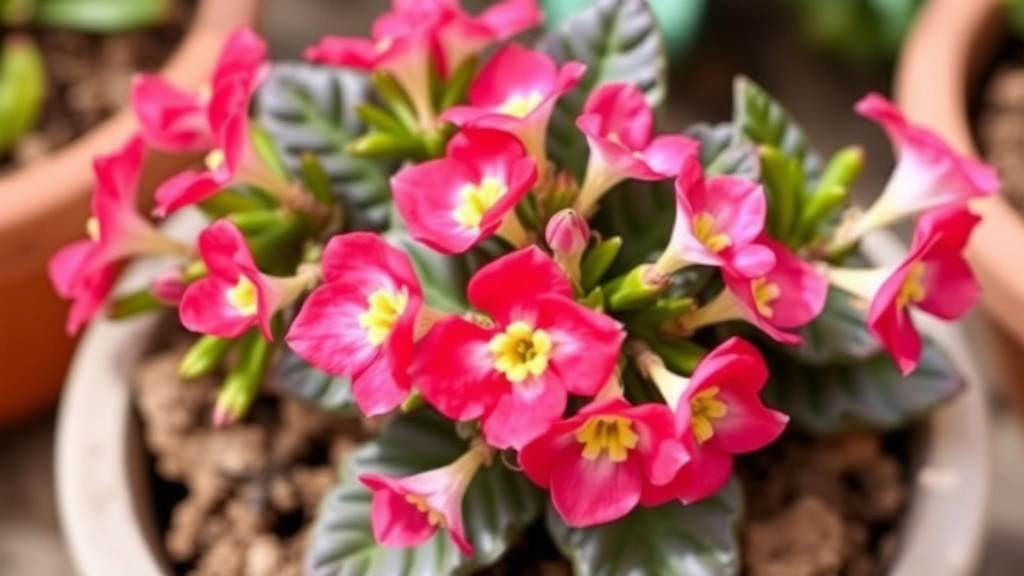
So, you’ve got a Kalanchoe that’s gone a bit quiet on the flowering front, huh? Maybe it’s been a while since those vibrant blooms lit up your space, and you’re itching to see those colours again. No worries! Forcing your Kalanchoe to rebloom is totally doable with a few simple tweaks.
Tips to Encourage Reblooming
- Light Exposure:
- Kalanchoes thrive on bright, indirect sunlight.
- If it’s not getting enough light, move it closer to a window.
- Just be careful of direct sun; too much can scorch those lovely leaves.
- Watering Routine:
- Let the soil dry out between waterings.
- Overwatering can lead to root rot, which is a real mood killer for blooming.
- Water less during the winter months when the plant is resting.
- Pruning:
- After the blooming period, snip off the spent flowers and any leggy growth.
- This encourages new growth and can help trigger more blooms.
- Temperature Control:
- Keep your Kalanchoe in a spot with temperatures between 15-21°C (60-70°F).
- A little chill can sometimes kickstart the blooming process.
- Dark Periods:
- Kalanchoes need a period of darkness to stimulate blooming.
- Try covering it with a box or placing it in a dark room for about 14 hours a day for a few weeks.
- Fertilization:
- Use a balanced fertiliser every couple of weeks during the growing season.
- This gives your plant the nutrients it needs to produce those stunning flowers.
Fertilization Tips for Better Blooming
As we explore ways to encourage your Kalanchoe to produce vibrant flowers, it’s essential to consider the role of fertilization. Many plant enthusiasts wonder why their Kalanchoe isn’t blooming as expected. One common reason is inadequate nutrition.
Understanding Nutrient Needs
Kalanchoes thrive on a balanced diet of nutrients, and the right fertilization can make all the difference. Here are some key tips:
- Choose the Right Fertilizer: Opt for a balanced, water-soluble fertilizer with an N-P-K ratio of 15-30-15 or similar. This ensures your plant receives the right nutrients for blooming.
- Timing is Everything: Fertilize your Kalanchoe during the growing season, typically in spring and summer. This is when the plant is actively growing and can utilise the nutrients effectively.
- Frequency of Application: Apply fertilizer every 4-6 weeks during the growing season. Avoid over-fertilizing, as this can lead to lush foliage at the expense of flowers.
- Dilution Matters: Always dilute the fertilizer to half the recommended strength. This prevents root burn and allows for gradual nutrient absorption.
- Organic Options: If you prefer organic gardening, consider using compost or a diluted fish emulsion. These options provide a slow release of nutrients and improve soil health.
After fertilizing, keep an eye on your Kalanchoe. If you notice vibrant growth and budding flowers, you’re on the right track. However, if the plant appears leggy or discoloured, it may be a sign of over-fertilization or nutrient imbalance. For more specific care tips, you can refer to our expert tips on Kalanchoe care and our guide on maximizing the longevity of your Kalanchoe plant.
How to Handle Pests and Diseases That Affect Flowering
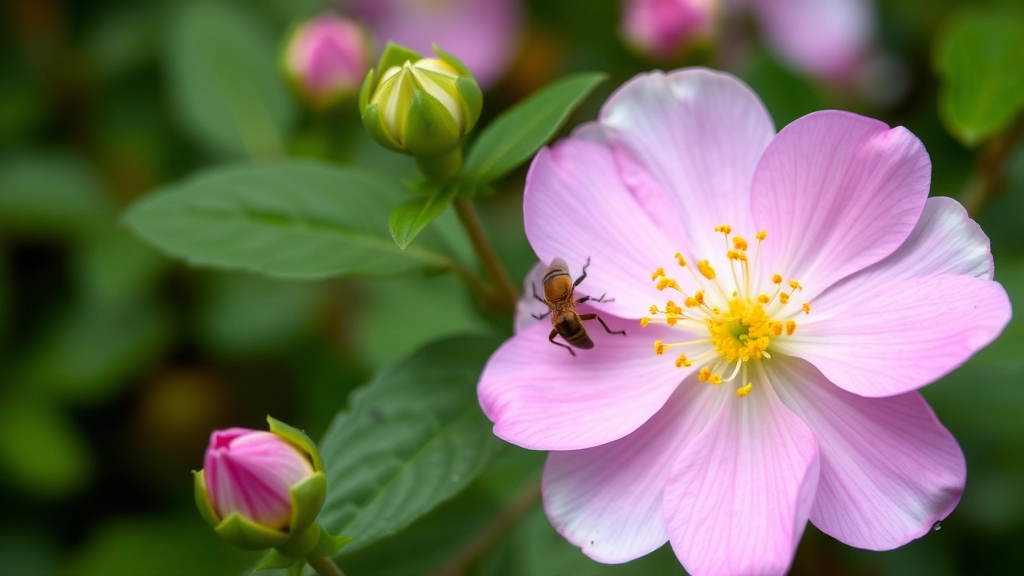
So, you’ve done everything right, but your Kalanchoe still isn’t blooming. Frustrating, right? Well, pests and diseases might be the culprits behind those sad, flowerless stems. Let’s dive into how to tackle these pesky problems.
Common Pests
- Mealybugs:
- Look for cotton-like spots on leaves.
- They suck sap and can stunt growth.
- Solution: Wipe them off with a cotton swab dipped in rubbing alcohol.
- Aphids:
- Tiny green or black bugs often found on new growth.
- They can cause yellowing leaves.
- Solution: Spray with a mixture of water and dish soap.
- Spider Mites:
- Tiny red or brown specks that create webbing.
- They thrive in dry conditions.
- Solution: Increase humidity and spray with insecticidal soap.
Common Diseases
- Root Rot:
- Caused by overwatering, leading to mushy roots.
- Look for wilting or yellowing leaves.
- Solution: Let the soil dry out and consider repotting in fresh, well-draining soil.
- Powdery Mildew:
- White, powdery spots on leaves.
- Often a sign of poor air circulation.
- Solution: Improve airflow and remove affected leaves.
Prevention Tips
- Regular Checks: Keep an eye on your Kalanchoe. Early detection is key!
- Proper Watering: Avoid overwatering to prevent root rot.
- Good Airflow: Place your plant in a spot with good ventilation.
Taking care of pests and diseases is crucial for your Kalanchoe to thrive and, eventually, bloom.
Common Misconceptions About Kalanchoe’s Flowering Cycle
As we explore the intricacies of Kalanchoe care, it’s essential to address some common misconceptions that can hinder your plant’s blooming potential. Many plant enthusiasts often find themselves confused about what truly influences Kalanchoe’s flowering cycle.
Misconception 1: Kalanchoe Blooms Year-Round
One prevalent myth is that Kalanchoe flowers continuously throughout the year. In reality, these plants have specific blooming seasons, typically in late winter to early spring. Understanding this cycle is crucial for managing expectations.
Misconception 2: More Water Equals More Flowers
Another misconception is that overwatering will encourage more blooms. In fact, Kalanchoe prefers a dry environment. Overwatering can lead to root rot, ultimately harming your plant and reducing its flowering potential.
Misconception 3: All Kalanchoe Species Flower the Same Way
Not all Kalanchoe varieties have the same flowering habits. Some types may bloom more profusely than others, and knowing the specific variety you have can help tailor your care approach. For instance, the Kalanchoe Paddle Plant has unique care requirements.
Misconception 4: Fertilizer Guarantees Blooms
While fertilization is important, many believe that simply applying fertiliser will lead to abundant flowers. It’s about the right type and timing. A balanced fertiliser during the growing season can indeed help, but too much can be detrimental.
Misconception 5: Pruning is Optional
Many plant owners think pruning is not necessary. However, regular pruning encourages new growth and can significantly enhance flowering. Removing spent blooms helps redirect energy to new flower production. For optimal growth, check out these essential pruning tips.
Misconception 6: Light Doesn’t Matter
Some believe that Kalanchoe can thrive in low light conditions. This is far from the truth. Adequate light is essential for flowering. A bright, indirect light location is ideal for these plants to flourish.
Signs Your Kalanchoe is Ready to Flower Again
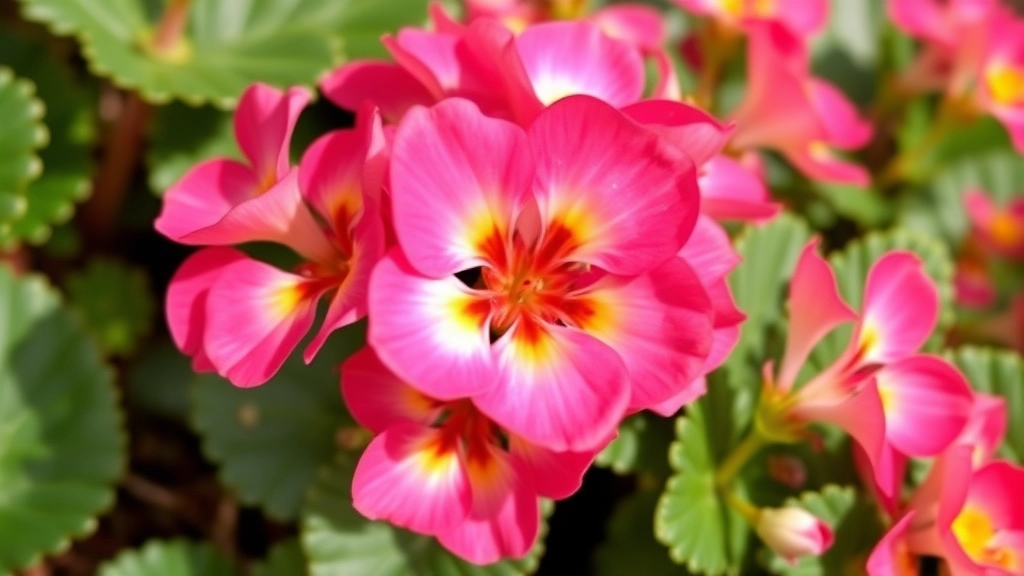
So, you’ve been nurturing your Kalanchoe, and you’re itching to see those vibrant blooms again.
But how do you know when it’s ready to show off its flowers?
Here are some tell-tale signs that your Kalanchoe is gearing up for another round of blooming:
- New Growth: Look for fresh, green leaves sprouting. This is a good sign that your plant is healthy and ready to produce flowers.
- Shorter Days: Kalanchoes are sensitive to light. As the days get shorter, your plant will start preparing for its flowering phase. If the days are around 12 hours or less, it’s a good indicator!
- Healthy Roots: If you notice roots peeking out from the drainage holes, it’s time for a repot. Healthy roots mean a healthy plant, which is crucial for blooming.
- Temperature Changes: Kalanchoes thrive in moderate temperatures. If you’ve recently adjusted the temperature, especially cooling it down a bit, your plant may respond by getting ready to bloom.
- Bud Formation: Keep an eye out for tiny buds forming at the ends of the stems. This is an exciting sign that flowers are on the way!
- Consistent Care: If you’ve been consistent with watering and fertilizing, your Kalanchoe will be more likely to bloom. It’s all about that nurturing!
Long-Term Care Tips for Continuous Blooming
Are you struggling to keep your Kalanchoe blooming throughout the year? It can be frustrating when your beloved plant seems to lose its vibrant flowers. However, with the right long-term care practices, you can encourage consistent blooming and enjoy its beauty for longer periods.
Key Care Tips for Continuous Blooming
- Consistent Lighting
- Ensure your Kalanchoe receives bright, indirect sunlight for at least six hours a day.
- Rotate the plant occasionally to promote even growth and flowering.
- Optimal Watering
- Water your Kalanchoe only when the top inch of soil feels dry.
- Avoid letting the plant sit in water, as this can lead to root rot.
- Regular Fertilisation
- Use a balanced, water-soluble fertiliser every four to six weeks during the growing season.
- Consider a fertiliser high in phosphorus to promote blooming.
- Pruning After Flowering
- After your Kalanchoe has finished blooming, prune back the spent flowers and any leggy growth.
- This encourages new growth and can lead to more flowers.
- Temperature Control
- Keep your Kalanchoe in a warm environment, ideally between 15°C and 25°C.
- Avoid exposing it to cold drafts or sudden temperature changes.
- Seasonal Dormancy Awareness
- Recognise that Kalanchoe may go through a dormancy period.
- Reduce watering and stop fertilising during this time to allow the plant to rest.
- Pest Management
- Regularly check for pests such as aphids or mealybugs.
- Treat infestations promptly with insecticidal soap or neem oil.
By implementing these long-term care tips, you can create an environment that supports continuous blooming in your Kalanchoe. For more specific guidance, check out our Kalanchoe Blossfeldiana Flowering Period Care Tips and learn about the optimal conditions for blooming across different Kalanchoe species.
FAQs on Kalanchoe Not Flowering
Why is my Kalanchoe not blooming?
Several factors can affect the blooming of your Kalanchoe, including insufficient light, inadequate pruning, improper watering, and pest or disease issues.
How much light does a Kalanchoe need to bloom?
Kalanchoes thrive in bright, indirect sunlight. They need at least 6 hours of light daily to encourage blooming. Avoid too much direct sunlight as it can scorch their leaves.
What are the signs that my Kalanchoe is not getting enough light?
If your Kalanchoe is stretching towards the light or its leaves are turning yellow, it’s a sign that it needs more light. Consider moving it closer to a window or using grow lights during shorter days.
How often should I prune my Kalanchoe to encourage blooming?
Prune your Kalanchoe every few months, especially after the blooming cycle, to remove spent flowers and dead leaves. This stimulates new growth and improves air circulation, which is essential for blooming.
What should I do to force my Kalanchoe to rebloom?
To encourage reblooming, ensure your Kalanchoe gets bright, indirect sunlight, follow a proper watering routine, prune after the blooming period, maintain optimal temperatures, provide dark periods, and fertilize during the growing season.
Can pests and diseases affect my Kalanchoe’s ability to bloom?
Yes, pests like mealybugs, aphids, and spider mites, as well as diseases like root rot and powdery mildew, can hinder blooming. Regularly check your plant for signs of pests and diseases and take appropriate measures to treat them.
How can I tell if my Kalanchoe is ready to flower again?
Look for signs such as new growth, shorter days, healthy roots, temperature changes, bud formation, and consistent care. These indicators suggest that your Kalanchoe is preparing to bloom again.
What are the best conditions for a Kalanchoe to thrive and bloom?
Ensure your Kalanchoe gets bright, indirect light, proper watering (letting the soil dry out between waterings), regular pruning, optimal temperatures (15-21°C or 60-70°F), and occasional periods of darkness to stimulate blooming.
How do I handle pests that affect my Kalanchoe?
For mealybugs, wipe them off with a cotton swab dipped in rubbing alcohol. For aphids, spray with a mixture of water and dish soap. For spider mites, increase humidity and spray with insecticidal soap.
What should I do if my Kalanchoe has root rot?
Root rot is caused by overwatering. Let the soil dry out and consider repotting your Kalanchoe in fresh, well-draining soil. Ensure proper watering habits to prevent future occurrences.
References
-
Why Isn’t My Kalanchoe Blooming?
-
How to Grow Kalanchoe Indoors
-
Kalanchoe: How to Grow and Care for Kalanchoe
